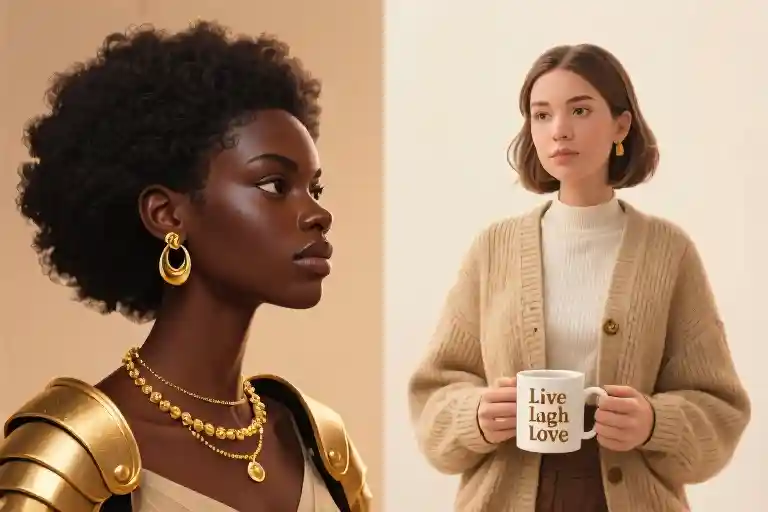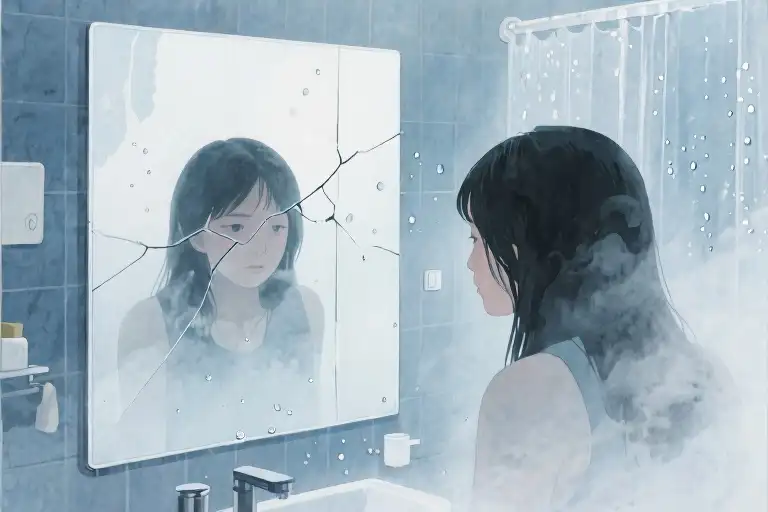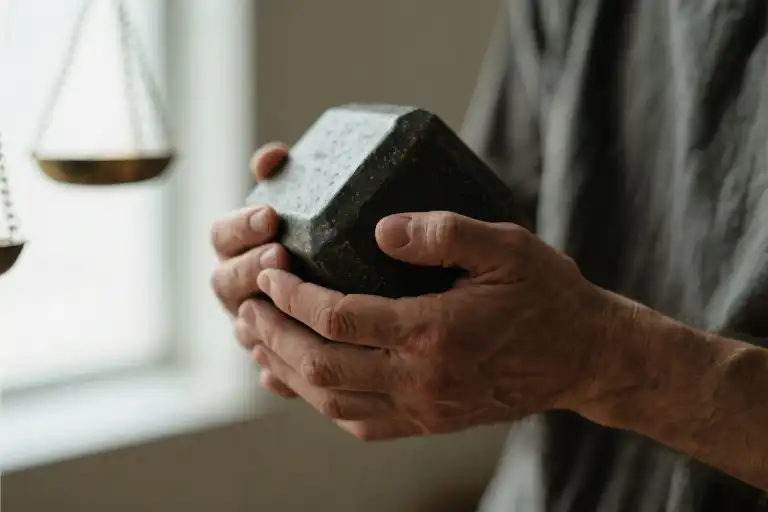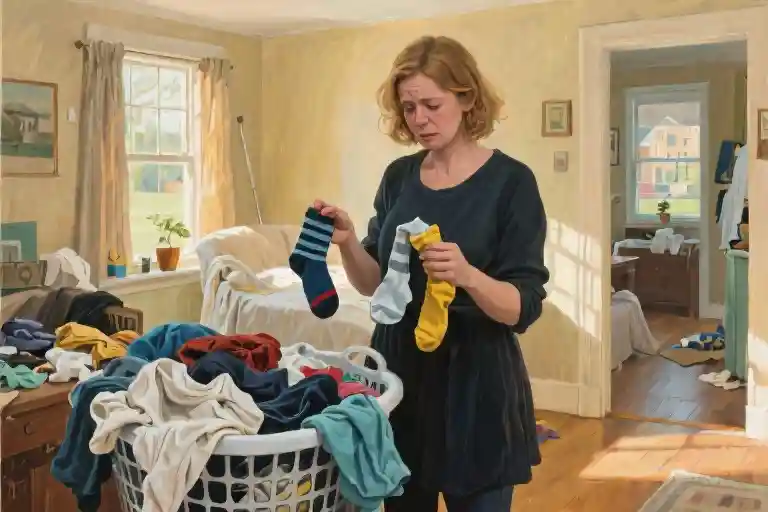I owe you an apology. When I first used the term ‘soft girl era’ in conversation with friends, I didn’t realize the cultural weight it carried. The phrase originated within Black women’s communities as a celebration of vulnerability and self-care – something far more nuanced than how my circle of middle-aged white women were casually tossing it around.
The moment crystallized for me during a book club meeting last month. ‘I’m done being angry,’ declared Sarah, ruffling her hair with that performative lightness we’ve all perfected. ‘It’s just not worth the energy anymore.’ Heads nodded around the circle. ‘Middle age is time for our soft era,’ someone added, and the agreement was palpable.
These conversations keep happening – at yoga studios, in Facebook groups, during wine-fueled dinners. There’s this collective sigh of relief at the idea of finally setting down what we perceive as the heavy burden of righteous anger. But each time I hear it, something prickles at the back of my neck.
Perhaps it’s the way we’ve flattened a complex cultural concept into a convenient emotional exit strategy. Or maybe it’s how effortlessly we claim this ‘soft era’ without acknowledging who gets to choose softness as an aesthetic versus who historically had to wield it as armor. The Black women who originated this language didn’t have the privilege of deciding when to engage with systemic injustice – their softness was, and remains, both rebellion and survival.
What unsettles me most isn’t the desire for peace itself – god knows we’ve earned moments of respite – but the unexamined assumption that our personal comfort should trump all else. When my friend said she wanted only ‘love and light’ moving forward, I wondered: does that include loving enough to stay angry about the school-to-prison pipeline? Does that light illuminate racial pay gaps or just our carefully curated meditation corners?
This isn’t about judging individual coping mechanisms. After forty, our bodies and brains demand different kinds of emotional labor. But I can’t shake the sense that we’re mistaking spiritual bypassing for enlightenment, confusing privilege with peace. There’s a world of difference between healthy detachment and willful disengagement – between laying down unnecessary burdens and abandoning necessary fights.
The irony isn’t lost on me that even this observation feels uncomfortably…unsoft. Maybe that’s the tension we need to sit with.
When We Talk About ‘Soft Era’: Cultural Roots and Semantic Shifts
The term ‘soft girl era’ didn’t originate in the wellness blogs of suburban white women. It emerged from Black women’s spaces as a radical act of self-definition—a reclamation of gentleness in a world that often denies them that privilege. There’s something profoundly different between choosing softness from a position of cultural strength versus adopting it as an escape hatch from discomfort.
I remember the first time I heard the phrase used among my peers. It floated through a book club meeting like scented candle smoke, divorced from its original context. ‘I’m just leaning into my soft era now,’ someone said while discussing workplace conflicts. At the time, I didn’t question this linguistic borrowing. Only later did I realize how the term had undergone semantic drift as it crossed racial and generational lines.
For Black women, the soft girl aesthetic often functions as both armor and rebellion. It counters the ‘angry Black woman’ stereotype while maintaining cultural specificity—think gold hoops against baby hairs, not beige cardigans with ‘live laugh love’ mugs. The difference isn’t just stylistic; it’s about whether softness serves as resistance or retreat.
My own journey of understanding this distinction involved uncomfortable realizations. After using the term casually in an earlier draft, a reader’s email stopped me cold: ‘Are you aware of where this language comes from?’ That question sent me down a research rabbit hole—TikTok tags like #softblackgirl, essays on Black femme aesthetics, academic papers about emotional labor disparities. What became clear was how easily cultural nuance gets lost in translation.
This isn’t to say terms can’t evolve or be shared across communities. Language always migrates. But there’s a responsibility that comes with borrowing—to understand what we’re taking, why it mattered where it came from, and what might be erased in the transition. When middle-aged white women (myself included) talk about our ‘soft eras,’ are we referring to the same emotional landscape as the Black twentysomethings who popularized the phrase? Probably not. And that difference deserves naming.
The semantic shift reveals something telling: for many white women, ‘soft era’ seems to function as emotional downsizing. It’s about opting out—of anger, of conflict, of the exhausting work of holding others accountable. There’s privilege in that choice, one not equally available to women whose identities make constant demands on their emotional labor. Recognizing this doesn’t invalidate anyone’s need for peace; it simply asks us to consider what gets left behind when we stop carrying certain weights.
What fascinates me most is how the same vocabulary can map onto such different emotional territories. Two women might both say they’re ’embracing their soft era,’ yet one means claiming space for vulnerability denied to her ancestors, while the other means setting boundaries against expectations placed on her by patriarchy. Both are valid; they’re just not the same. Maybe the first step is acknowledging that—not to police language, but to honor the full spectrum of what softness can mean.
The Silent Rebellion of Middle-Aged Women’s Emotional Struggles
That casual declaration – “I’m done being angry” – carries more cultural baggage than most of us realize. When middle-aged women collectively decide to enter their “soft era,” it’s rarely just a personal choice. There’s an entire ecosystem of societal pressures, biological changes, and unspoken rules fueling this emotional pivot.
The Stigma of Anger in Women Over 40
Anger in middle-aged women occupies a strange cultural space. Young women’s rage can sometimes be fashionable – think feminist manifestos or protest marches. But when those same women cross some invisible age threshold, their anger suddenly becomes… inconvenient. The transformation is subtle but unmistakable: where once we might have been praised for our passion, we’re now gently (or not so gently) encouraged to “calm down” or “not take things so personally.”
This isn’t just anecdotal. Studies from the University of Michigan show that while men’s anger is often perceived as authoritative, women’s anger after age 40 is disproportionately labeled as “hysterical” or “irrational.” The message gets internalized quickly – hence those lunchtime conversations about embracing softness instead.
The Great Midlife Emotional Split
What fascinates me most isn’t the desire for peace itself – that’s universally human – but the particular way middle-aged women articulate it. There’s always this implied before-and-after narrative: “I used to fight, but now…” The subtext suggests that our previous anger wasn’t just an emotion but an identity we’re now shedding.
This creates a peculiar form of cognitive dissonance. On one hand, we’re told to practice self-care and set boundaries (which often requires some degree of assertive energy). On the other, we’re expected to become these serene, accommodating figures – the emotional equivalent of a cashmere throw blanket. No wonder so many women describe feeling emotionally split down the middle.
Hormones as Both Culprit and Scapegoat
Let’s address the elephant in the room: menopause does change how we experience emotions. Fluctuating estrogen levels can intensify emotional responses, while societal narratives about “menopausal mood swings” make us hyper-aware of every irritation. It creates a perfect storm where we simultaneously experience stronger emotions and greater pressure to suppress them.
But here’s what rarely gets discussed: this biological transition also brings a kind of emotional clarity. Many women report feeling less inclined to perform emotional labor they don’t genuinely feel. What gets labeled as “irritability” might actually be the first authentic emotional responses some women have allowed themselves in decades.
The Privilege of Choosing Softness
This brings us to an uncomfortable truth: the ability to choose a “soft era” is itself a privilege. For women in marginalized communities or precarious economic situations, anger often remains a necessary survival tool. When systemic injustices directly impact your daily life, opting out of anger isn’t an aesthetic choice – it’s a luxury.
Perhaps this explains why the “soft era” conversation feels different when it comes from middle-aged white women versus its origins in Black women’s communities. In one context, it’s about self-preservation; in another, it risks becoming another form of emotional disengagement from broader societal issues.
Reimagining Emotional Middle Age
None of this means middle-aged women should remain perpetually angry. But maybe we need better language than this binary of “angry” versus “soft.” What would it look like to embrace emotional complexity – to acknowledge that we can simultaneously feel deep peace about personal matters while maintaining righteous anger about systemic ones?
The most emotionally liberated middle-aged women I know haven’t abandoned anger entirely. Instead, they’ve become more strategic about it – conserving their emotional energy for what truly matters rather than diffusing it in all directions. That might be the healthiest “soft era” of all: not the absence of fire, but the wisdom to know when to bank the flames and when to let them burn.
The Nuances of Softness Across Racial Lines
The term ‘soft girl era’ didn’t originate in vacuum-sealed Instagram posts or suburban book clubs. It emerged from Black women’s spaces as a radical act of self-preservation – a deliberate softening against systems that expected them to be either bulletproof or invisible. There’s profound difference between this cultural inheritance and what I’ve observed in predominantly white middle-aged circles embracing their ‘soft era.’
For Black women, softness often functions as survival armor. The ability to project gentleness in hostile environments becomes strategic performance, what scholar Brittney Cooper calls ‘the polite politics of respectability.’ This isn’t about emotional authenticity but calculated navigation through workplaces and public spaces that punish Black anger disproportionately. The viral #BlackGirlSoftness movement celebrates this complexity – the intentional cultivation of tenderness as both resistance and respite.
White women’s relationship with softness exists on different terrain. When my friend Karen declares she’s ‘done being angry’ during our book club meeting, she’s exercising privilege masquerading as enlightenment. Her soft era comes with unspoken assumptions: that the world will receive her gentleness as charming rather than weak, that opting out of anger won’t have professional consequences, that her peace won’t be mistaken for passivity. These are luxuries not equally distributed.
The cultural appropriation debate here isn’t about terminology policing but context collapse. When white women adopt ‘soft era’ rhetoric without acknowledging its roots in Black women’s survival strategies, we risk turning complex emotional labor into another self-help commodity. The yoga studio version of softness – all scented candles and forgiveness journals – often strips away the political dimensions inherent in the original concept.
Yet I hesitate to dismiss this middle-aged softness phenomenon entirely. There’s real pain beneath those ‘love and light’ mantras – the exhaustion of being the emotional switchboard for families and workplaces, the invisibility of aging in a youth-obsessed culture. The problem arises when personal coping mechanisms get framed as universal wisdom, when our individual soft eras start erasing collective struggles.
Perhaps the boundary lies in intentionality. Are we using softness to recharge for necessary battles, or to justify disengagement? Does our version acknowledge those who don’t have the privilege to choose their emotional posture? These questions don’t have clean answers, but they’re worth sitting with before we declare ourselves permanently done with anger.
The Dialectics of Anger and Peace
The conversation about embracing a ‘soft era’ often circles back to one uncomfortable question: When does choosing peace become complicity? There’s an ethical weight to opting out of anger that we rarely discuss at book clubs or yoga retreats.
Historical movements tell a stark story. The suffragettes weren’t handing out lavender-scented manifestos – they chained themselves to fences. Civil rights activists didn’t counter fire hoses with mindfulness mantras. Anger, channeled precisely, has been the engine of every significant social shift women have achieved. Yet today’s middle-aged women are being sold a different narrative – that our value lies in how gracefully we can shrink our emotional range.
Five warning signs suggest when the pursuit of ‘softness’ crosses into toxic positivity:
- The Language of Erasure: When ‘I choose peace’ consistently follows discussions of systemic injustice
- The Timeline Test: If your anger about workplace discrimination faded faster than your annoyance at slow WiFi
- The Privilege Blindspot: Believing emotional regulation is purely a personal achievement rather than a resource-dependent skill
- The Empathy Gap: Advising younger women to ‘rise above’ issues you no longer face
- The Spiritual Bypass: Using meditation apps more than voting ballots
This isn’t about glorifying perpetual outrage. I keep a post-it on my bathroom mirror that reads ‘Not everything deserves your anger’ right next to another that says ‘Not everything deserves your silence.’ The middle-aged women I know – myself included – are tired. Bone-tired. But we must examine whether our ‘soft eras’ are sanctuaries or surrenders.
Perhaps the healthiest approach lives in the hyphen between self-care and social care. What if our soft era included:
- Designated ‘rage time’ (20 minutes weekly to engage with infuriating news)
- Anger audits (asking ‘Who benefits when I stop being angry about this?’)
- Softness with teeth (comfort that fuels action rather than replaces it)
The white women at that café table have earned their exhaustion. But we mustn’t confuse laying down our armor with laying down our responsibility. There’s a version of this soft era that doesn’t require going numb – one where we learn to hold our tenderness and our teeth in the same hands.
Building Your Healthy Emotional Ecosystem
The pursuit of a ‘soft era’ shouldn’t mean silencing legitimate frustrations or disengaging from societal issues. What if we could design an emotional ecosystem that honors our need for peace while maintaining our capacity for righteous anger? This isn’t about choosing between serenity and activism—it’s about creating space for both.
The Emotional Energy Ledger
Think of your emotional reserves like a bank account. Withdrawals happen when we engage with draining situations (scrolling political Twitter at midnight counts), while deposits come from restorative practices (that 20-minute nap actually matters). The trouble begins when we keep making withdrawals without checking the balance.
Try this simple tracking method:
- Morning intention: Write one sentence about what emotional energy you’ll need today (“Patient listening for parent-teacher conference”)
- Evening reflection: Note what unexpectedly drained or replenished you (“Coworker’s compliment boosted me more than coffee”)
- Weekly audit: Spot patterns—maybe Tuesday meetings always require extra recovery time
Scheduled Fire: The ‘Anger Hours’ System
Instead of either suppressing rage or being constantly furious, carve out deliberate spaces for engagement. A marketing executive I know blocks 4-5pm every Friday as her ‘social justice hours’—she reads articles, donates to causes, and allows herself to feel the full weight of injustice… then closes her activism notebook until next week.
This approach works because:
- It prevents burnout by containing intense emotions within manageable containers
- Creates psychological permission to disengage at other times
- Often leads to more strategic action than constant low-level irritation
Finding Your Balanced Tribe
The women in those ‘love and light’ conversations aren’t wrong for wanting peace—they’re just missing the accountability piece. Look for communities that:
- Share memes about bubble baths AND post voter registration links
- Discuss meditation apps alongside local protest calendars
- Understand that sometimes self-care looks like turning off the news, other times it’s showing up at school board meetings
One book club member told me, “We read romance novels one month, anti-racism texts the next. Both feed different parts of us.” That’s the sweet spot.
The Permission Slip
Here’s what I keep taped to my laptop:
“You are allowed to:
- Take a mental health day from activism
- Feel furious about the state of the world
- Protect your joy like it’s your job
- Change your mind about what balance means
- Start over tomorrow”
Because ultimately, a sustainable soft era isn’t about denying hard truths—it’s about developing the resilience to face them without breaking.
What Does Your Soft Era Carry?
The conversation about soft eras always circles back to this unspoken question: what are we willing to carry into our newfound gentleness? That manicured version of peace we see on Instagram – the one with artfully arranged teacups and journal spreads – rarely accounts for the emotional baggage we drag behind us like invisible suitcases.
There’s privilege in declaring “I’m done being angry.” Not everyone gets that choice. For some women, anger isn’t an emotion they can retire like last season’s wardrobe. It’s the necessary fuel that keeps them vigilant against systems that would otherwise erase them. The soft girl era originated as Black women’s reclamation of tenderness in a world that demanded their constant strength – it was never about abandoning righteous anger, but about creating space for multidimensional existence.
So when we middle-aged women (particularly those of us with racial privilege) talk about entering our soft eras, we might pause to inventory what we’re leaving at the door. Are we setting down the weight of performative outrage? Or are we abandoning the tools that help us recognize injustice? There’s a difference between releasing what no longer serves us and relinquishing our responsibility to stay awake.
Perhaps the healthiest soft era isn’t about the absence of anger, but about its intentional use. Like keeping a fire extinguisher behind the glass – you hope never to need it, but you’d never remove it just because the kitchen looks prettier without it. My version now includes scheduled “anger appointments” – twenty minutes every Thursday where I let myself properly rage about climate change or reproductive rights before returning to my regularly scheduled softness.
Your turn. When you picture your ideal soft era, what non-negotiable items still have a place in your emotional luggage? Share your thoughts using #MySoftEraChallenge – I’ll be collecting responses for a follow-up piece. For those wanting to explore further, I’ve found these resources invaluable:
- Hood Feminism by Mikki Kendall (especially the chapter “Solidarity Is Still for White Women”)
- The Still Processing podcast episode “The Power of Black Women’s Anger”
- adrienne maree brown’s workshops on “pleasure activism” as political resistance
The softest revolutions often happen in whispers, not shouts. But they still require us to show up with our whole selves – tender palms and clenched fists alike.





